Six of Britain’s worst buildings in the running for architecture’s wooden spoon

Today we reveal the shortlist for the Carbuncle Cup 2017, architecture’s award for Britain’s worst building. Our six strong shortlist contains a mix of buildings types of differing scales and demonstrates that buildings don’t have to be big to be bad and that poor quality architecture touches all building types. Carbuncle Cup contenders suffer from a range of sins including gross overdevelopment, eye popping cladding, overbearing massing, a gross disregard for context, incoherent form, overblown ‘statement’ buildings, weak planning and the just plain, cheap and nasty.
Like last year the shortlist is a broad representation of what is being built in Britain today. Considering the numbers of luxury flats being built in the Battersea and Nine Elms area of London it’s perhaps no surprise one of these has appeared on this year’s shortlist and once again there is a large central London office scheme. The mix also includes an office to hotel conversion and a domestic extension. Sadly yet again there is a student accommodation scheme, a regular fixture of the Carbuncle Cup shortlist every year since Stephen George & Partners’ 465 Caledonian Road won in 2013.
The shortlist was selected by a panel of judges consisting of BD editor Thomas Lane, assistant editor Elizabeth Hopkirk, Twentieth Century Society director Catherine Croft and Urbed director and chair of the Academy of Urbanism David Rudlin who won the Wolfson Economic Prize in 2014. Readers’ comments were also considered during the judging process.
The winner of the Carbuncle Cup will be announced next Wednesday.
Carbuncle Cup 2017 shortlist
Nova Victoria by PLP Architecture
Pity poor Victoria. Rebuilt in the 1960’s after WWII bombing, the area is now being extensively redeveloped by Land Securities but sadly not for the better. The latest offering is Nova Victoria, a 897,000ft² mixed-use development occupying a whole city block. The architect, PLP has attempted to break up the monolithic nature of these scheme by expressing it as a pair of sliced and chamfered towers and jazzing it up with several bright red prows presumably to give it that ‘landmark’ quality. Instead several readers questioned how it got planning.
Preston Railway Station Butler Street Entrance by AHR
The residents of Preston took to Twitter in droves to denounce Preston Railway Station’s new entrance which replaced a 1980’s building that mimicked the station’s Victorian style.
Operator Virgin Trains said it was a “contrasting structure to create a more modern and passenger friendly environment”. The residents of Preston clearly preferred the former entrance variously describing the new building as an “eyesore”, “hideous”, “a joke” and “planning gone mad”.
Nominator Steve Webberley described it as a “deadening cake tin slapped on its side”. He said: “This fractured geometric lean-to would seem out of date 10 years ago. It isn’t even that well-planned inside. The relationship with the window line of the brick station is laughable. We’ve come a long way from Brunel. A very long way…”
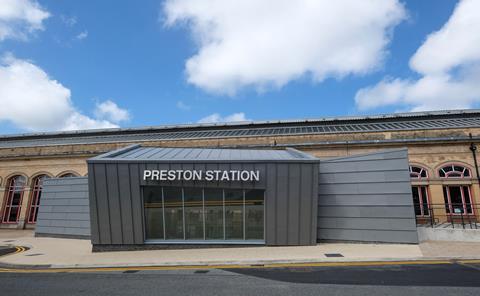
Greetham Street Student Halls, Portsmouth by Cooley Architects
Greetham Street Student Halls looks like it was inspired by a Carbuncle Cup nominee from 2015, a student hall in Southampton called City Gateway. It was nicknamed the ‘fag butt’ by unimpressed locals for a centrepiece tan and beige coloured circular tower. Like City Gateway Greetham Street Student Halls features a tower with two tone cladding and the same discordant jumble of multi-coloured rectilinear blocks at the base.
The nominator, Kieran Clarke said, ‘It seems that the building’s architects were either colour blind when choosing the external cladding or wanted to blind others with the bright yellow cube at the top of their tower.’
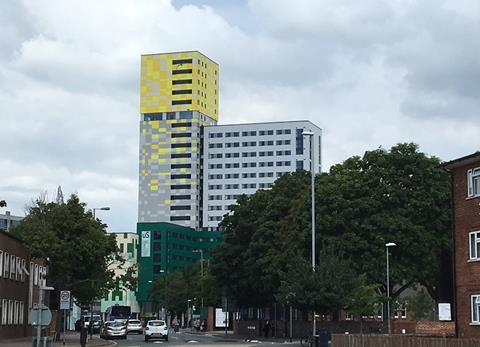
8 Somers Road, Malvern by Vivid Architects
This home has been refurbished and enlarged with a procession of extensions. The design and access statement accompanying the planning application describes these as ‘subservient and understated with a crisp modern aesthetic distinct from the historic house’.
The nominator Robert Smith disagreed, describing the extension as a ‘Lego brick’. He said, ‘I am aware that planning guidelines today are to keep a clear boundary between new and old structures, but the architect has made no attempt to unify the house and now most people assume this family home to be a medical centre.’
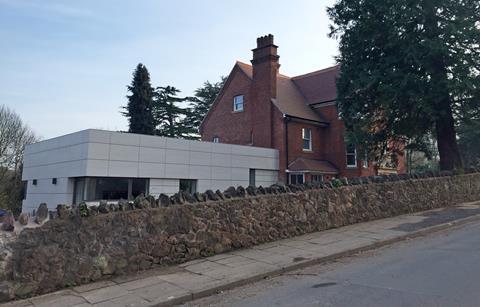
Circus West, Battersea Power Station, London by Simpson Haugh
Circus West pulls off the feat of making Europe’s largest brick building look small and was a very popular nomination with the BD readership. Comments included, ‘A great case of gross over development - it’s disgusting!’, and ‘Now we’re talking…. might as well stop the rest of the nominations being listed. We have a winner right here.’
Many of our readers also pointed out the blame for this building should be shared with Rafael Vinoly who was responsible for the masterplan. Unfortunately this scale of overdevelopment has been forced on the power station because of a series of bad deals made by a series of owners needing to recoup their investments.
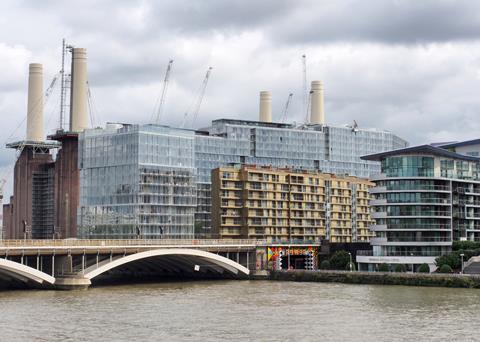
Park Plaza London Waterloo by ESA Architecture
This dowdy beige 1950s government building to hotel conversion has been jazzed up presumably to draw in the punters.
The lower lower storeys are swathed in tiles whose pattern would cause havoc on a TV screen, and whose colours manage to be both gaudy and drab at the same time.
To draw attention to the entrance, the architects lifted the cornice at one corner and wrapped a weird screen around it. It looks like the skin has been peeled from someone’s torso, exposing a spaghetti of blood vessels and veins beneath.
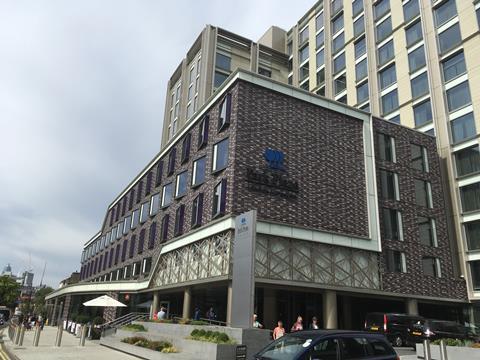


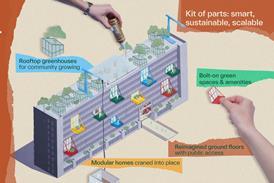
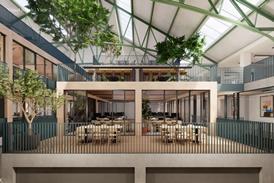
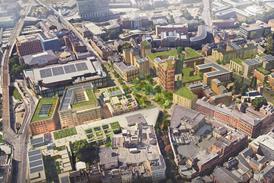
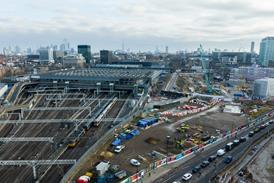



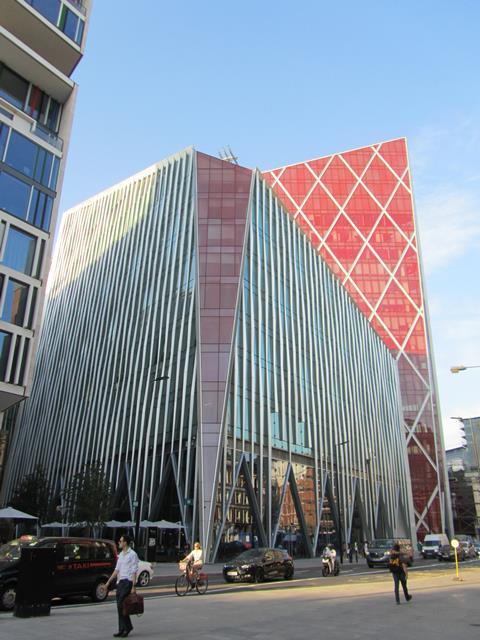







9 Readers' comments